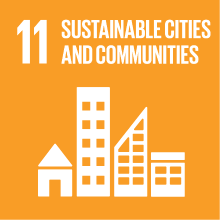PROTOHISTORIC ARCHAEOLOGY OF THE VENETIAN TERRITORY
- Academic year
- 2025/2026 Syllabus of previous years
- Official course title
- ARCHEOLOGIA PROTOSTORICA DELLE VENEZIE SP.
- Course code
- FM0024 (AF:577979 AR:324428)
- Teaching language
- Italian
- Modality
- On campus classes
- ECTS credits
- 6
- Degree level
- Master's Degree Programme (DM270)
- Academic Discipline
- L-ANT/06
- Period
- 2nd Semester
- Where
- VENEZIA
Contribution of the course to the overall degree programme goals
It will be analyzed relationships between Venetic culture and the etruscan one, the Adriatic, Mediterranean and European connection; we pay attention to the chronological items and to material culture.
Our main focus is to improove ability to make chronological references for archaeological evidence of etruscan art and civilisation.
Single item will be selected and specifically oriented, in flipped classroom mode too.
Expected learning outcomes
- To know basic archaeological and technical terminology
- To Know development of settlements and cities in Venetic area
- To Know main theoretical models to analize urban societies
- To know main features of local material culture
2. Ability to apply knowledge and understanding
- To be able to employ archaeological and technical terminology
- To be able to apply theoretical models for the development of Venetic culture and landscape
- To be able to analyze settlements and cities
- To be able to analyze examples of material culture and artistic finds
3. Judgment skills
- To be able to judge and argue hypothesis about venetic contexts
4. Communication skills
- To be able to tell new finds or results of the research with a plain and technical terminology
- To be able to compare themselves with colleagues and tutor, even on.line
5. Learning ability
- To be able to take notes and to share them with colleagues, even on line
- To be able to consult bibliographic references even with a critical point of view
Pre-requirements
Contents
Fictile and metal finds that can be considered chronological markers will be analysed; in the contexts examined, the most common associations between different typologies will be explored.
The definition of the most typical aspects of the material culture is useful to establish forms of comparison with neighbouring or economically related cultural aspects.
Referral texts
L. Capuis, I Veneti, Società e cultura di un popolo dell'Italia preromana, Milano 1993, in particolare pp. 122-139; 141-151; 160-164.
A. M. Chieco Bianchi, L. Calzavara Capuis, Este I. Lenecropoli di Casa di Ricovero, Casa Alfonsi e Casa Muletti Prosdocimi, MAL LI serie monografica II, Roma 1985 (una selezione di tombe concordate con la docente)
L. Capuis, A.M. Chieco Bianchi, Este II, La necropoli di villa Benvenuti, MAL LXIV serie monografica VII, Roma 2006 (una selezione di tombe concordate con la docente)
M. Gamba, G. Gambacurta, A. Ruta Serafini (a cura di), La prima Padova. Le necropoli di Palazzo Emo Capodilista- Tabacchi e di via Tiepolo -via San Massimo tra IX e VIII secolo a.C., Venezia 2014.
F. Bortolami, Aria di famiglia. Identità e società nel Veneto preromano, Quingentole 2023.
V. Baratella, L'VIII secolo a.C. in Veneto, Tipocronologia ed aspetti culturali sulla base delle evidenze funerarie, Quingentole 2024.
Assessment methods
Type of exam
Grading scale
More specifically:
it is considered sufficient (18-22/30) the test in which the student is able to identify at least half of the images submitted for examination; frame the subjects, describe adopting technical terminology the structural features and characteristics of the material and imported culture with a with even generic chronological references.
The test is considered good (22-26/30) if the student is able to identify more than half of the images submitted for examination, describing the adopting technical terminology, indicate their cultural context, identify the places and productions and hypothesise a chronology;
The test is considered very good (27-30/30) if the student is able to identify all the images submitted for examination, frame them chronologically and culturally, adopting a technical terminology, and provide a critical reading of the contexts within the framework of pre-Roman Italy and Etruria in its territorial variations.
The test is considered excellent (30/30 cum laude) if the student is able to identify all the images submitted for examination adopting technical terminology, frame them culturally and chronologically and provide a personal and critical re-elaboration of the significance of individual objects or contexts in the development of Etruscan civilisation and pre-Roman Italy with a view to a historical and social reconstruction.
Teaching methods
Lectures and exercises
On.line papers for specific topics.
Flipped classroom
2030 Agenda for Sustainable Development Goals
This subject deals with topics related to the macro-area "Cities, infrastructure and social capital" and contributes to the achievement of one or more goals of U. N. Agenda for Sustainable Development


